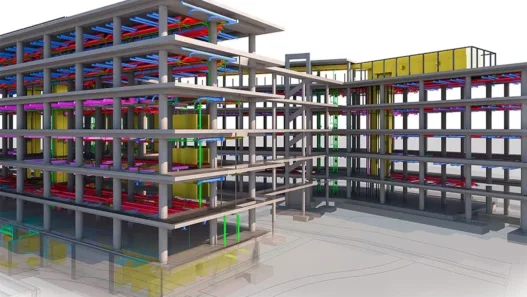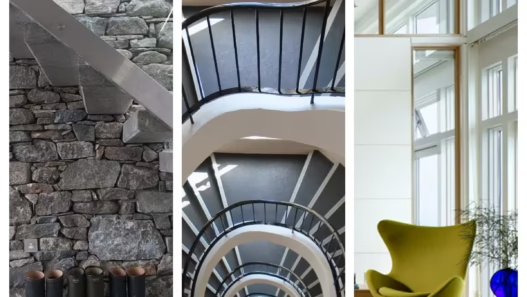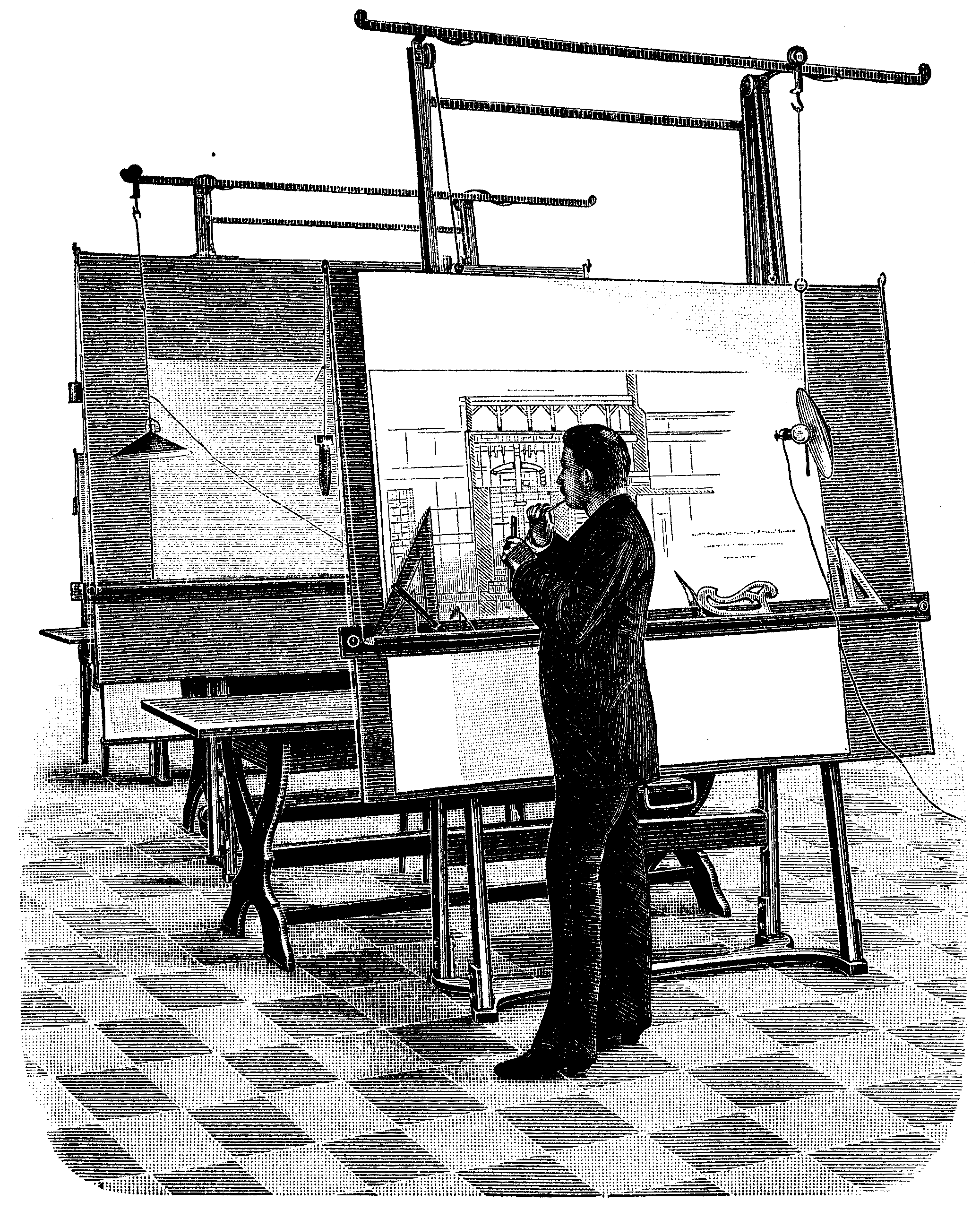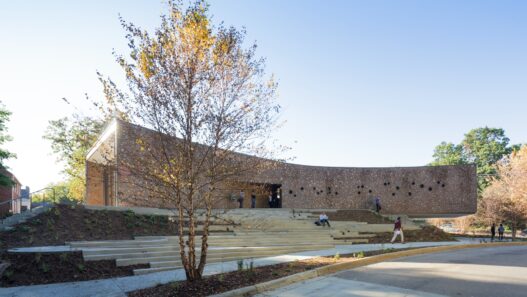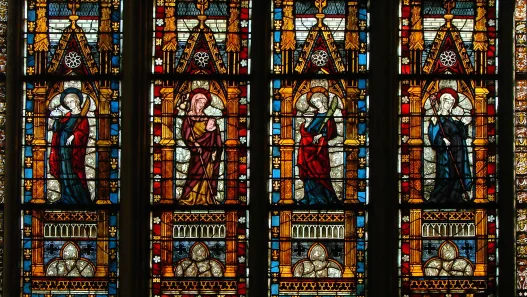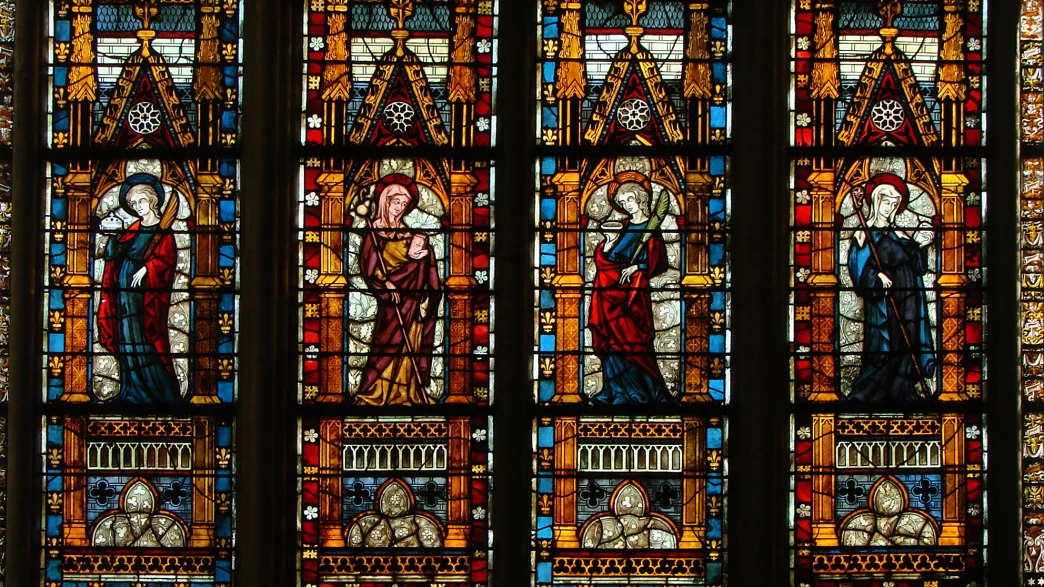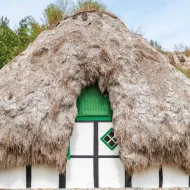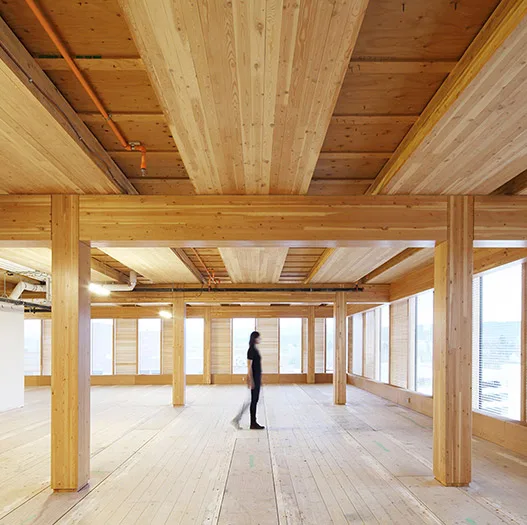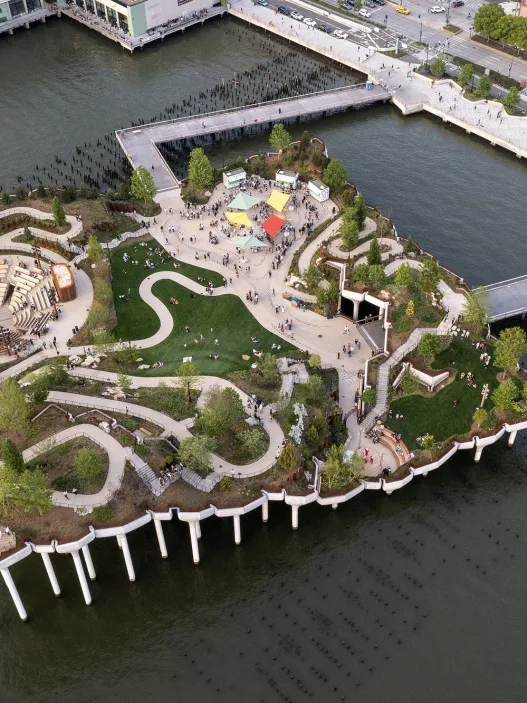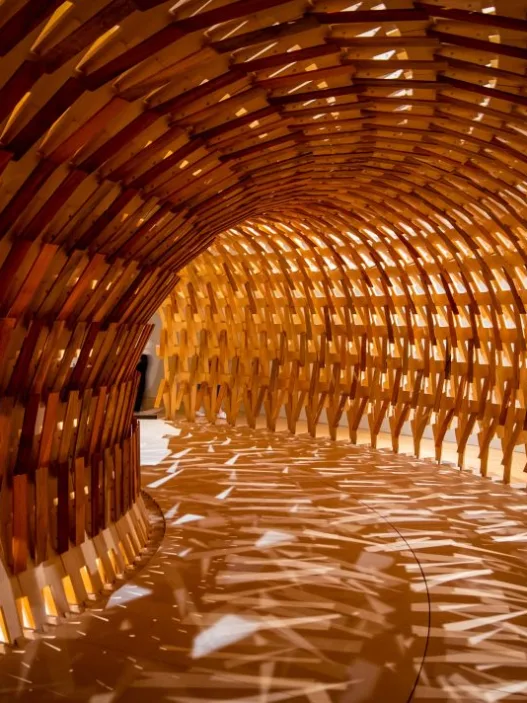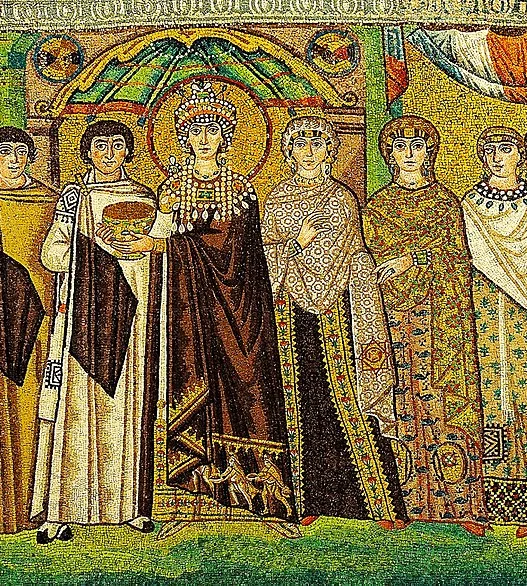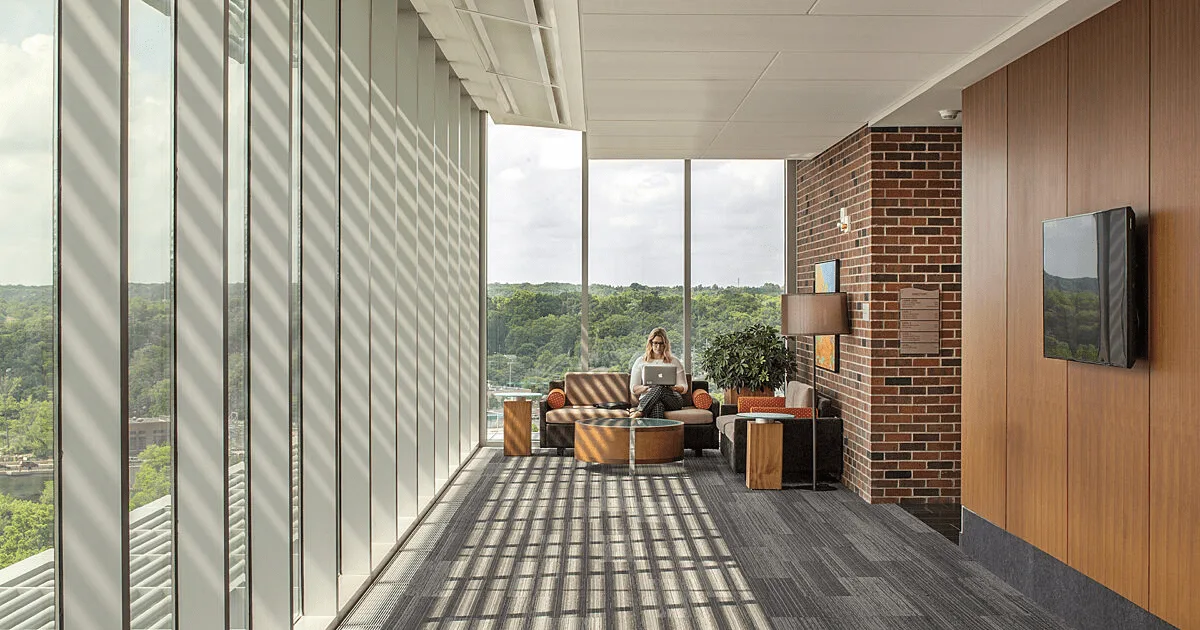Glass windows are not just functional elements of a building; they are integral components that shape our experience of space, light and architecture. From the delicate stained glass of cathedrals to the sleek, modern glass of skyscrapers, glass windows have evolved significantly over the centuries.
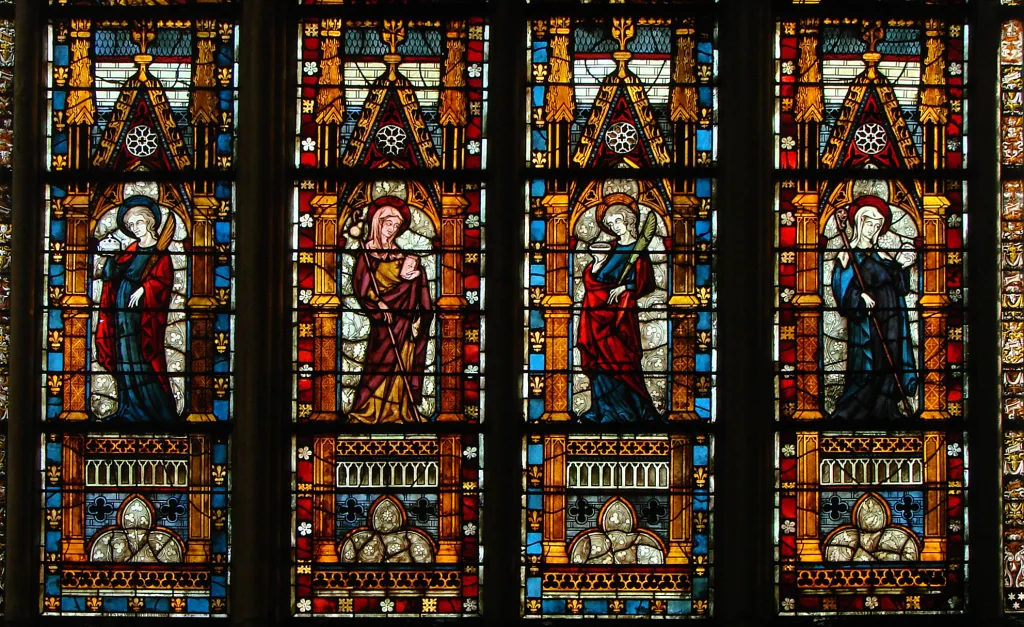
Defining Glass: Composition and Types Used in Windows
In essence, glass is a solid material formed by cooling molten silica or sand with various additives. The basic composition of glass typically includes silica (about 70-75%), soda (sodium carbonate) and lime (calcium oxide). These components work together to form a transparent, durable material that can be shaped and molded into various forms.
There are several types of glass used in windows, each with unique properties and applications. Flat glass, the most common type, is produced by floating molten glass on molten tin, resulting in a smooth, flat surface. This type is widely used in residential and commercial buildings. Another type, tempered glass, undergoes a heating and cooling process to increase its strength, making it ideal for safety applications such as shower doors and glass facades.
In addition, laminated glass consists of two or more layers of glass bonded together with a plastic interlayer, providing additional safety and sound insulation. Often associated with churches and historic buildings, stained glass is created by adding metal oxides to the glass during production, resulting in vibrant colors and intricate designs. Each type of glass serves a specific purpose and contributes to the overall functionality and aesthetic appeal of windows in architecture.
Historical Context: Origins of Glass Production
The history of glass production dates back thousands of years, with evidence of glassmaking techniques found in ancient Mesopotamia and Egypt as early as 2000 BC. Initially, glass was primarily used for decorative objects such as beads and small vessels. However, as techniques improved, glass began to be used in windows, especially in Roman architecture.
The Romans were pioneers in the use of glass in windows, often using small panes of glass set in wooden frames. This innovation allowed natural light into buildings, changing the way spaces were experienced. However, glass windows remained a luxury item accessible only to the wealthy until advances in glass production techniques in the Middle Ages made them more widely available.
The introduction of stained glass in medieval cathedrals marked an important turning point in the history of glass windows. Artisans created intricate designs that told biblical stories and depicted saints, creating a spiritual atmosphere in sacred spaces. This tradition continued into the Renaissance, when glass windows became a canvas for artistic expression, blending functionality with beauty.
Cultural Significance: The Role of Glass Windows in Architecture
Glass windows have deep cultural significance in architecture as symbols of transparency, connection and illumination. They fill the space between indoors and outdoors, allowing natural light to flood the spaces while offering views of the outside world. This relationship with light is not only functional, but also carries a deep symbolic meaning, representing enlightenment and clarity.
In many cultures, glass windows have been used to convey messages of faith, hope and community. Stained glass windows in churches and cathedrals function as visual narratives that tell stories that align with the beliefs and values of the congregation. Similarly, in Islamic architecture, intricate geometric patterns and calligraphy are often incorporated into glass windows, reflecting the cultural and spiritual identity of the community.
Moreover, glass windows also play an important role in modern architecture and are used to create open, airy spaces that foster a sense of connection with nature. The use of large glass panels in contemporary buildings blurs the boundaries between indoors and outdoors, encouraging a harmonious relationship with the environment. This cultural significance of glass windows emphasizes their ability to enhance the human experience in architectural spaces.
Understanding the Relationship between Light and Space in Architectural Design
The interaction between light and space is a fundamental aspect of architectural design and glass windows are key players in this relationship. Natural light has the power to transform spaces by influencing mood, perception and functionality. By carefully considering the placement and size of windows to optimize the flow of light, architects create dynamic environments that enhance the user experience.
Incorporating glass windows into architectural design allows for varying degrees of light control, from bright, open spaces to intimate, softly lit areas. The use of skylights, skylights and large glass facades can create dramatic effects, highlight architectural features and draw attention to specific areas within a building.
The orientation of windows also plays an important role in utilizing natural light. For example, south-facing windows capture sunlight throughout the day, while north-facing windows provide softer, diffused light. Architects often use these principles to create spaces that are not only visually appealing but also energy efficient and reduce the need for artificial lighting.
The relationship between light and space is further enhanced by the use of different types of glass. Frosted or textured glass diffuses light to create a soft ambience, while clear glass provides unobstructed views and maximum illumination. This thoughtful approach to light and space elevates the overall design and makes glass windows an essential element of contemporary architecture.
Global Trends: Development of Glass Technology Through the Ages
The development of glass technology has made remarkable advances throughout history, shaping the way glass windows are manufactured and used in architecture. From the first glass blowing and casting techniques to the modern innovations of tempered and laminated glass, each advance has expanded the possibilities of architectural design.
In recent years, the trend towards energy-efficient buildings has led to the development of advanced glass technologies. Low-emissivity (low-E) glass, for example, is designed to increase energy efficiency and reduce heating and cooling costs by letting in natural light while reflecting heat. In addition, smart glass technology allows light and privacy to be dynamically controlled, allowing windows to change their tint according to sunlight, providing comfort and energy savings.
Sustainability has also become an important focus in glass technology and manufacturers are exploring environmentally friendly materials and production methods. Recycled glass and energy-efficient manufacturing processes are increasingly being integrated into the industry, reflecting a growing awareness of environmental impact.
Globally, the architectural landscape continues to evolve and glass windows play a central role in shaping modern buildings. The trend towards transparency and openness in design is evident in skyscrapers, cultural institutions and residences where glass is celebrated for its ability to connect people to their surroundings.
As a result, glass windows are much more than functional elements; they are an integral part of the architectural experience, influencing light, space and cultural expression. From their historical origins to their modern interpretations, glass windows have evolved significantly, reflecting advances in technology and shifts in societal values. As we continue to explore the role of glass in architecture, it is clear that its legacy will endure and shape the way we experience and interact with the built environment.
Medieval Glass Windows: A Reflection of Faith and Art
Medieval glass windows are an extraordinary testament to the intersection of faith, art and architectural innovation. Not only did they serve a practical purpose by allowing light into sacred spaces, but they also became canvases for storytelling and spiritual expression. This research will examine the early techniques used in glass production, the importance of stained glass in Gothic cathedrals, the symbolism and narratives depicted in these works, architectural features that emphasize their significance, and notable case studies of iconic medieval buildings.
Early Techniques: Hand Blown Glass and Lead Use Arrived
Glass window production in the medieval period began with primitive techniques that set the stage for the intricate stained glass we associate with Gothic architecture. Early glassmakers used hand-blown glass, a labor-intensive process that involved heating silica and other materials in a furnace and then blowing air into the molten glass to create bubbles. This method produced small, irregularly shaped glasses that were often used in windows.
To assemble these panes into larger windows, artisans used lead casting, a technique that involved placing pieces of glass in a frame made of lead strips. The lead strip not only held the glass together, but also allowed the creation of intricate designs and patterns. This method became a hallmark of medieval glazing and enabled artisans to produce elaborate windows that could be customized to reflect the themes and stories desired by customers.
While early glass was often transparent or slightly tinted, it was not until later that colored glass was introduced, allowing for the vibrant hues that characterize stained glass windows. The combination of hand-blown glass and lead set the stage for the artistic expressions that would develop during the Gothic period.
Stained Glass: Artistic Expression in Gothic Cathedrals
The appearance of stained glass in the Gothic period marked an important evolution in the use of glass windows in architecture. Stained glass windows became a defining feature of Gothic cathedrals, transforming the way light entered these sacred spaces. Artisans began to add metallic oxides to the glass during production, resulting in a range of colors that could be manipulated to create intricate designs.
In Gothic cathedrals, stained glass windows served both aesthetic and spiritual purposes. The vibrant colors filtered sunlight, projecting ethereal patterns onto the stone interiors and creating a mystical atmosphere that enriched the worship experience. The interplay of light and color symbolized the divine presence, inviting the congregation to reflect on their faith.
The art used to make stained glass was remarkable. Skilled artisans meticulously crafted each piece, often depicting scenes from the Bible, saints and allegorical figures. These windows became not only decorative elements, but also powerful storytelling tools that conveyed religious narratives to a largely illiterate population.
Symbolism and Narrative: Stories Told through Stained Glass
Stained glass windows in medieval churches were rich in symbolism and expression, and served as visual sermons conveying complex theological concepts. Each window was carefully designed to convey specific messages and often reflected the beliefs and values of the community it served.
For example, windows depicting the life of Jesus helped worshippers relate to the story of salvation by showing key moments such as the Nativity, Crucifixion and Resurrection. Saints were often depicted in the windows, serving as intercessors and role models for the faithful. The use of color also had symbolic meanings; for example, blue often represented the Virgin Mary, while red symbolized martyrdom and sacrifice.
In addition to biblical narratives, stained glass windows could also convey moral lessons and virtues. Allegorical figures such as Faith, Hope and Charity were commonly featured to remind parishioners of the values they should aspire to in their daily lives. This storytelling aspect of stained glass windows reinforced the Church’s teachings and helped educate the faithful.
Architectural Features: The Role of Windows in Gothic Architecture
In Gothic architecture, windows were not merely functional elements; they were an integral part of the overall design and structure of cathedrals. The introduction of flying buttresses allowed larger windows to open, creating a sense of verticality and lightness that defined the Gothic style. These architectural innovations allowed the construction of large stained glass windows that filled the interiors with vibrant light.
The placement of windows in Gothic cathedrals was also carefully considered. Large rose windows, usually at the west end of the nave, served as focal points, drawing the eye upwards and symbolizing the connection between heaven and earth. Smaller skylights allowed light to filter into the upper parts of the building, brightening the space and enhancing the spiritual experience.
The intricate tracery that adorned many Gothic windows added to their visual complexity, creating patterns that echoed natural forms found in nature. This attention to detail reflected the belief that beauty in architecture could inspire awe and reverence, bringing worshippers closer to the divine.
Case Studies: Iconic Medieval Buildings with Striking Glass Windows
Many iconic medieval buildings exemplify the beauty and importance of glass windows in architecture. One of the most famous is Chartres Cathedral in France, famous for its stunning stained glass windows dating back to the 12th and 13th centuries. There are more than 150 windows in the cathedral, each telling a unique story and showcasing the artistry of medieval glass masters. Chartres blue is particularly famous, often referred to as “Chartres blue” and a testament to the skill of the artisans who created it.
Another notable example is the Sainte-Chapelle in Paris, a Gothic chapel famous for its breathtaking stained glass. Completed in the 13th century, the upper floor of the chapel is adorned with 15 large windows depicting scenes from the Bible, creating a kaleidoscope of color as the sunlight filters through. The height and beauty of these windows heightens the spiritual experience inside the chapel.
York Minster in England has an impressive collection of stained glass, including the Great East Window, the largest medieval stained glass window in the country. Telling the story of the creation and redemption of humankind, it demonstrates the narrative power of stained glass to convey theological themes.
These case studies highlight the enduring legacy of medieval glass windows, demonstrating their artistic, spiritual and architectural significance. They remind us of the deep connection between faith and art and how glass windows have shaped the experience of sacred spaces throughout history.
Ultimately, medieval glass windows are an extraordinary reflection of faith and art, embodying the spiritual aspirations of their time. From the earliest techniques using hand-blown glass and lead to the vibrant stained glass of Gothic cathedrals, these windows are powerful storytellers, conveying narratives and symbolism that resonate with the human experience. While we continue to appreciate the beauty and significance of these windows, we also recognize their lasting impact on architecture and the cultural heritage they represent.
Renaissance Developments and Innovations in Glass Windows
The Renaissance was a period of cultural rebirth and intellectual exploration that lasted from the 14th to the 17th century and led to significant developments in several fields, including the art of glassmaking. This period witnessed a transformation in the use of glass windows, reflecting broader changes in architectural design, technology and philosophical thought. This research will examine the technological developments that led to the use of transparent glass, the integration of glass into classical architecture, innovations in structural support for large-scale windows, the symbolism of light, and important case studies of Renaissance buildings with remarkable glass windows.
Technological Developments: Introduction of Transparent Glass
One of the most important developments in glass windows during the Renaissance was the introduction of clear glass. Prior to this period, glass windows were often made from small, hand-blown panes that were tinted or imperfect, resulting in a distorted view of the outside world. The Renaissance brought improvements in glass production techniques, enabling the production of larger, clearer panes that provided unobstructed views and improved the quality of light entering buildings.
The development of crown glass and cylinder glass techniques enabled artisans to produce flatter and clearer sheets of glass. Crown glass was made by rolling molten glass into a flat disk, while cylinder glass involved blowing a cylinder of glass and then flattening it. These methods not only increased clarity, but also allowed for larger glazing, which became increasingly popular in both residential and public buildings.
The introduction of transparent glass marked a shift in architectural aesthetics as architects began to prioritize natural light and transparency in their designs. This innovation has not only changed the appearance of buildings, but also the way spaces are experienced, creating lighter and more inviting interiors.
Integration with Classical Architecture: A Change in Design Aesthetics
The Renaissance was characterized by a revival of classical ideas and aesthetics, and this influence extended to the design of glass windows. As architects sought to emulate the splendor of ancient Greek and Roman structures, they began to integrate glass windows into their designs to complement classical architectural elements.
Large, symmetrical windows became the hallmark of Renaissance architecture, often framed by elaborate stonework and decorated with decorative motifs. The use of pilasters, arches and columns around the windows reflected the classical style, creating a harmonious relationship between the glass and the surrounding structure. This integration not only enhanced the visual appeal of the buildings, but also emphasized the importance of light and space in architectural design.
Furthermore, the use of glass in Renaissance architecture was often associated with the ideals of humanism, celebrating the beauty of the natural world and the human experience. Architects began to design windows that not only served functional purposes, but also contributed to the overall aesthetic and philosophical goals of their work.
Large Scale Windows: Innovations in Structural Support
As the demand for larger glass windows increased, architects faced the challenge of ensuring that these large openings could be structurally supported without compromising the integrity of the building. The Renaissance saw significant innovations in structural engineering that enabled the creation of large-scale windows that became the defining feature of many iconic buildings.
The introduction of rib vaults and flying buttresses, techniques borrowed from Gothic architecture, provided the necessary support for larger windows. These architectural elements distributed weight more effectively, allowing the addition of large panes of glass without the risk of structural distortion. As a result, buildings such as cathedrals and palaces had large windows that flooded the interiors with natural light.
In addition, improvements in the use of iron and lead in window frames contributed to the creation of larger openings. These materials provided strength and durability, allowing for windows that were not only functional but also visually stunning. The combination of innovative engineering and artistic design led to breathtaking glass windows that became the focal point of Renaissance architecture.
Symbolism of Light: Philosophical Change in the Use of Glass
During the Renaissance, the use of glass windows took on a deeper philosophical significance, especially in relation to the symbolism of light. This period of increasing interest in humanism, science and the natural world led to a change in the way light was perceived in architectural design.
Light came to be seen not only as a physical phenomenon, but also as a symbol of knowledge, enlightenment and divine presence. Architects and artists embraced the idea that light could transform spaces and create a sense of transcendence and spirituality. The use of large, open windows allowed for the infusion of natural light, which was seen as a means of uniting the earthly realm with the divine.
This philosophical shift influenced the design of churches, public buildings and private residences, with windows becoming vehicles for conveying spiritual and intellectual ideals. The interplay of light and shadow in these spaces encouraged contemplation and reflection, inviting residents to engage with the deeper meaning of their surroundings.
Famous Renaissance Buildings with Glass Windows
Many iconic Renaissance buildings exemplify the developments and innovations in glass windows during this transformative period. One notable example is Florence Cathedral, also known as the Duomo. Completed in the 15th century, its large windows feature intricate designs that complement the cathedral’s stunning architecture, allowing light to illuminate the interior and increase the sense of awe.
Another important building is the Palazzo Ducale in Venice, which showcases large, beautifully crafted windows that reflect the wealth of the Republic of Venice. The interplay of light and glass in this palace creates a sense of grandeur, inviting visitors to experience the splendor of Renaissance architecture.
St. Peter’s Basilica in Vatican City is perhaps one of the most famous examples of Renaissance architecture featuring large glass windows. The large glass windows allow natural light to flood the interior, emphasizing the intricate details of Michelangelo’s dome and creating a spiritual atmosphere that attracts worshippers and visitors alike.
These case studies demonstrate the profound impact of glass windows on Renaissance architecture, revealing how advances in technology and design transformed the way light was used in sacred and civic spaces.
As a result, the Renaissance period marks an important moment in the history of glass windows, characterized by technological advances, a shift in design aesthetics, and a deeper philosophical understanding of light. The integration of transparent glass, large-scale windows and classical architectural elements transformed the way spaces were experienced, reflecting the ideals of the time. While we continue to appreciate the beauty and significance of Renaissance glass windows, we also recognize their lasting legacy in the evolution of architectural design and the human experience.
Baroque and Rococo Periods: Opulence and Ornamentation
The Baroque and Rococo periods, from the late 16th to the 18th century, were characterized by design exuberance, dramatic artistic expressions and a passion for opulence. During these periods, glass windows evolved significantly, becoming an integral part of the architectural narrative. They not only served practical purposes, but also contributed to the overall aesthetic experience of buildings. This research will examine the elaborate designs of decorative glass, the integration of light to enhance spatial experiences, technological advances in plate glass production, architectural features that define the Baroque and Rococo styles, and notable case studies of iconic buildings that showcase these magnificent glass windows.
Careful Designs: The Use of Decorative Glass in Architecture
During the Baroque and Rococo periods, glass windows became the canvas for elaborate designs that reflected the splendor of the surrounding architecture. Artisans began to experiment with decorative glass techniques, creating intricate patterns, motifs and colors that enhanced the visual impact of the windows.
Stained glass remained popular, but the Baroque period saw the emergence of more elaborate designs featuring swirling patterns, floral motifs and scenes from mythology and religion. The use of colored glass was not just functional; it was an important aspect of the overall aesthetic and contributed to the opulence that defined the period.
In addition to stained glass, etched and engraved glass also came to the fore, allowing for elaborate images that could capture and refract light in a mesmerizing way. These decorative elements were often incorporated into larger window designs, creating a sense of movement and dynamism that echoed the theatricality of Baroque architecture. The interplay of light and color through these decorative windows added layers of meaning and beauty to the spaces they adorned.
Integration with Light: Enhancing the Experience of Space
The Baroque and Rococo periods placed a strong emphasis on the manipulation of light in architectural spaces. Windows were designed not only as openings, but as integral components that shape the atmosphere and experience of a room. The strategic placement and design of windows allowed for the dramatic interplay of light and shadow, enhancing the emotional and sensory experience of space.
In Baroque churches and palaces, large windows were often positioned to capture sunlight at certain times of the day, creating a theatrical effect that transformed interiors. The use of translucent materials and elaborate glass designs allowed light to filter through to illuminate works of art, sculptures and architectural details, drawing attention to the richness of the surroundings.
Moreover, the integration of mirrors and reflective surfaces in these spaces amplified the effects of light, creating a sense of grandeur and expanse. This careful orchestration of light and glass contributed to the overall sensory experience, inviting residents to engage more deeply with their surroundings.
Technological Developments: Development of Plate Glass
The Baroque and Rococo periods also witnessed significant technological advances in glass production, especially with the development of plate glass. This innovation allowed the creation of larger, flatter panes of glass, essential for the large windows characteristic of the period.
Plate glass was produced by pouring molten glass onto a flat surface and then polishing it to achieve clarity and smoothness. This method allowed artisans to create large windows that could be used in large facades and interiors, improving the overall aesthetics of buildings. The ability to produce larger panes of glass meant that architects could design more ambitious structures with large windows that invited natural light into large spaces.
As a result of these technological advances, the use of glass became more widespread, allowing the construction of magnificent palaces, churches and public buildings that showcased the beauty and elegance of glass windows. The combination of innovative glass production techniques and the artistic vision of the period led to the development of architectural styles that exalted opulence and ornamentation.
Architectural Features: The Role of Windows in Baroque and Rococo Styles
In Baroque and Rococo architecture, windows played a crucial role in defining the overall style and character of buildings. The architectural features associated with these periods emphasized grandeur, movement and intricate detailing, and windows were no exception.
Baroque windows were often characterized by dramatic shapes such as arched or oval forms and were often decorated with elaborate moldings and frames. The use of pilasters, cornices and decorative elements around the windows created a sense of depth and richness, enhancing the visual impact of the façade.
In Rococo architecture, the emphasis shifted towards lighter, more playful designs. Windows are often decorated with intricate carvings, gilding and ornamental details that reflect the whimsical nature of the style. The integration of windows into the overall design of Rococo buildings contributed to a sense of fluidity and elegance, inviting light and air into the spaces.
Overall, the architectural features of windows in the Baroque and Rococo styles were not merely functional; they were essential elements that contributed to the overall narrative of opulence and artistry that defined these periods.
Iconic Buildings Showcasing Baroque Glass Windows
Many iconic buildings from the Baroque and Rococo periods exemplify the developments and innovations in glass windows during these periods. A notable example is the Palace of Versailles in France. With its large windows decorated with gilded frames and reflective surfaces, the Hall of Mirrors reveals the opulence of the period. The interplay of light through the large windows creates a striking visual effect, enhancing the luxurious atmosphere of the palace.
Another important building is St. Peter’s Basilica in the Vatican, where large windows add to the overall grandeur of the interior. The use of large, beautifully crafted glass windows allows natural light to illuminate the intricate details of Michelangelo’s dome and Bernini’s sculptures, creating a spiritual and awe-inspiring experience for visitors.
The Church of San Carlo alle Quattro Fontane in Rome is another example, with its striking oval windows that are both architecturally innovative and artistically elaborate. The windows allow light to flood in, emphasizing the intricate frescoes and sculptures that adorn the church.
These case studies show that Baroque and Rococo glass windows were not only functional elements, but also integral components of the architectural narrative, reflecting the richness and artistry of the period.
In conclusion, the Baroque and Rococo periods mark a significant evolution in the use of glass windows in architecture. From elaborate designs and the integration of light to technological advances and architectural features, glass windows became key elements that reflect the opulence and ornamentation of these periods. While we continue to appreciate the beauty and importance of Baroque and Rococo glass windows, we also recognize their lasting legacy in the history of architecture and art.
Industrial Revolution: Mass Production and Accessibility
The Industrial Revolution was a period of profound change that transformed economies, societies and technologies from the late 18th to the early 19th century. One of the most important developments during this period was in the field of glass production, which shifted from handcrafted techniques to industrialized processes. This transformation not only made glass more accessible, but also revolutionized architectural design. This research will examine developments in glass production, the introduction of float glass, the emergence of architectural modernism, the functional role of windows in modernist architecture, and important case studies of landmark modern buildings with innovative glass windows.
Developments in Glass Production: From Handcrafting to Industrialization
Before the Industrial Revolution, glass production was a labor-intensive craft that relied on skilled artisans to produce small quantities of glass. Each piece was handcrafted, resulting in variations in quality and size. However, the advent of industrialization led to significant changes in the production process, enabling the mass production of glass.
With the introduction of steam-powered machinery and advances in production techniques, glass production became more efficient and standardized. Factories began to appear where glass could be produced in larger quantities, reducing costs and making it more accessible to a wider audience. This change not only increased the availability of glass for windows, but also allowed architects and builders to experiment with larger and more innovative designs.
The industrialization of glass production was a turning point in the history of architecture as it enabled the construction of previously unimaginable buildings. The ability to produce uniform sheets of glass meant that architects could design wide facades and use large windows, fundamentally changing the relationship between buildings and their surroundings.
New Materials Introduction of Flat Glass
One of the most important innovations in glass production during the Industrial Revolution was the introduction of flat glass. Developed in the mid-20th century, float glass is produced by floating molten glass on molten tin, resulting in a smooth, flat surface. This process allowed the creation of large, uniform sheets of glass, free of the imperfections commonly found in earlier glass production methods.
The introduction of float glass revolutionized the construction industry as it provided architects with a new material that was not only clearer but also more durable. This innovation facilitated the design of large windows and glass walls, allowing for greater transparency and light in buildings. Flat glass has become the standard of modern architecture, enabling the creation of sleek, minimalist designs that emphasize openness and connection to the outside world.
As a result, flat glass played a pivotal role in the evolution of architectural aesthetics, ushering in a new era of design that celebrated simplicity and clarity.
Architectural Modernism: Transition towards Minimalism and Transparency
The Industrial Revolution paved the way for the emergence of architectural modernism, a movement that sought to break with traditional styles and adopt new materials and technologies. Modernist architects advocated the principles of minimalism and transparency, emphasizing the importance of form following function.
Glass windows became central to modernist design as they provided a seamless connection between interior and exterior spaces. The use of large glass panels and open floor plans created a sense of fluidity and continuity, challenging the traditional boundaries of architecture. This shift towards transparency not only transformed the aesthetics of buildings, but also redefined how people interacted with their environment.
Modernist architects such as Ludwig Mies van der Rohe and Le Corbusier adopted glass as a primary material and used it to create iconic structures that celebrated simplicity and functionality. The emphasis on natural light and unobstructed views became hallmarks of modernist architecture, reflecting a broader cultural shift towards openness and innovation.
Functionalism The Role of Windows in Modernist Architecture
In modernist architecture, windows were not merely decorative elements, but essential components that served functional purposes. The philosophy of functionalism emphasized that the design of a building should be guided by its intended use, and windows played a crucial role in this approach.
Large windows provide natural light, ventilation and views, increasing the overall comfort and usability of spaces. Architects designed windows to maximize these benefits, often incorporating features such as sliding glass doors and large glass walls that blurred the lines between indoor and outdoor environments.
The functional role of windows in Modernist architecture also reflected a growing awareness of environmental considerations. By utilizing natural light and reducing the need for artificial lighting, architects aimed to create energy-efficient buildings in line with sustainability principles.
Case Studies: Landmark Modern Buildings with Innovative Glass Windows
Many iconic modern buildings exemplify the innovative use of glass windows and the principles of modernist architecture. One notable example is the Seagram Building in New York City, designed by Ludwig Mies van der Rohe. Completed in 1958, this iconic skyscraper features a sleek glass facade that embodies the ideals of transparency and minimalism. The large windows create a sense of openness, allowing natural light to flood in and offering spectacular views of the city.
Another important building is the Glass House, designed by Philip Johnson in 1949. Composed entirely of glass walls, this architectural masterpiece blurs the boundaries between the interior and the surrounding landscape. The Glass House exemplifies the modernist concept of transparency and simplicity, inviting nature into the living space.
The Centre Pompidou in Paris, designed by Renzo Piano and Richard Rogers, is another landmark building showcasing innovative glass windows. The building’s striking design features large glass panels that allow natural light to illuminate the interior galleries, creating a dynamic and inviting cultural space.
These case studies highlight how advances in glass production and modernist architectural principles transformed the use of windows, making them an integral part of the design and functionality of contemporary buildings.
As a result, the Industrial Revolution marked an important period in the history of glass windows, characterized by advances in production and the introduction of float glass.
Contemporary Glass Windows: Sustainability and Technology
In the contemporary era, glass windows have taken on a new importance with advances in technology and a growing emphasis on sustainability. As architects and designers strive to create buildings that are not only aesthetically pleasing but also environmentally sensitive, glass has emerged as a key material in achieving these goals. In this research, the energy efficiency of insulated and low-emissivity (Low-E) glass, the innovations brought by smart glass technologies, the architectural integration of glass in sustainable design, and global trends highlighting the role of glass in contemporary urban architecture will be discussed.
Energy Efficiency: Development of Insulated and Low-E Glass
As concerns about energy consumption and environmental impacts grow, the development of energy-efficient glazing has become a priority in contemporary architecture. Insulated glass units (IGUs) consist of two or more panes of glass separated by an air or gas-filled spacer, creating a barrier that reduces heat transfer. This design significantly improves thermal performance, helping to maintain comfortable indoor temperatures while reducing the need for heating and cooling.
Low-E glass is another innovation that has revolutionized energy efficiency in windows. This type of glass is coated with a thin layer of metallic oxide that reflects infrared light while allowing visible light to pass through. By minimizing heat loss in winter and reducing heat gain in summer, Low-E glass helps to lower energy bills and improve the overall comfort of a building.
These advances in glass technology not only contribute to energy savings, but are also in line with global sustainability goals. By using energy-efficient windows, architects and builders can create structures that are more environmentally friendly and comply with green building standards.
Smart Glass Technologies: Innovations in Light Control and Privacy
The advent of smart glass technologies has further transformed the role of glass windows in contemporary architecture. Smart glass, also known as switchable glass, can change its properties according to environmental conditions or user preferences. This innovation allows dynamic control of light, heat and privacy, making it an exciting addition to modern buildings.
There are several smart glass technologies, including electrochromic, thermochromic and photochromic glass. Electrochromic glass can change from transparent to opaque with the application of an electrical charge, allowing users to adjust the amount of light entering a space. This is particularly useful in commercial buildings where glare control and privacy are important.
Smart glass can also contribute to energy efficiency by reducing reliance on artificial lighting and HVAC systems. By automatically adapting to changing light conditions, smart glass helps maintain comfortable indoor environments while minimizing energy consumption. This technology represents a significant leap forward in creating adaptive and responsive architectural spaces.
Architectural Integration: Using Glass in Sustainable Design
In contemporary architecture, glass is increasingly integrated into sustainable design practices, serving both functional and aesthetic purposes. Architects are taking advantage of the transparency and versatility of glass to create buildings that harmonize with their surroundings while promoting energy efficiency and occupant well-being.
The use of glass in green building design often involves strategies such as maximizing natural light, improving ventilation and minimizing energy use. Large glass facades and strategically placed windows can reduce the need for artificial lighting, while operable windows allow natural ventilation, improving indoor air quality.
Furthermore, the integration of glass with other sustainable materials such as reclaimed wood and green roofs creates a harmonious design that reflects a commitment to environmental responsibility. By thoughtfully incorporating glass into sustainable architecture, designers can create spaces that are not only visually stunning, but also promote a healthier and sustainable lifestyle.
Global Trends: The Role of Glass in Contemporary Urban Architecture
As urban environments continue to evolve, glass has become a defining material in contemporary architecture. The trend towards transparency and openness in urban design reflects the desire for connectivity and interaction in densely populated areas. Glass buildings often serve as landmarks that showcase innovative design and modern aesthetics.
In cities around the world, glass is being used to create iconic skyscrapers, cultural institutions and public spaces that prioritize light and openness. The use of glass allows for expansive views, inviting the outside world indoors and fostering a sense of community. Furthermore, the reflective qualities of glass facades can enhance the visual appeal of the urban landscape, creating dynamic interactions with light and the environment.
Moreover, the emphasis on sustainability in urban design has led to the use of energy-efficient glazing technologies in new developments. As cities seek to reduce their carbon footprint, the integration of advanced glazing solutions aligns with the goals of creating more sustainable and livable urban environments.
As a result, contemporary glass windows represent the convergence of sustainability and technology, reflecting the changing needs and values of society. From energy-efficient insulated and Low-E glass to innovative smart glass technologies, advances in glass production have transformed the way we design and experience architectural spaces. As architects continue to integrate glass into sustainable design practices and respond to global trends, the role of glass in contemporary urban architecture will undoubtedly remain important and shape the future of our built environment.
The Future of Glass Windows in Architecture
Looking ahead, the future of glass windows in architecture is likely to be shaped by a mix of innovation, sustainability and technological integration. With rapid advances in materials and design, glass windows are poised to play a pivotal role in the evolution of architectural practice. This research will explore emerging trends in glass technology and design, the integration of smart technologies into buildings, global perspectives on glass in architecture, community engagement in promoting sustainable practices, and the enduring importance of glass windows in architectural evolution.
Emerging Trends: Innovations in Glass Technology and Design
Glass technology is constantly evolving with new innovations that improve both performance and aesthetics. One of the most exciting trends is the development of self-cleaning glass, which uses hydrophobic and photocatalytic coatings to break down dirt and grime when exposed to sunlight. This innovation not only reduces maintenance costs, but also keeps buildings looking pristine, adding to their overall attractiveness.
Another emerging trend is the use of dynamic glass that can change its tint or opacity according to environmental conditions. This technology provides greater control over light and heat, improving energy efficiency and occupant comfort. As architects increasingly prioritize sustainability, the use of such smart materials will become standard practice in modern design.
In addition, advances in glass recycling are paving the way for more sustainable production methods. By reusing glass materials, manufacturers can reduce waste and energy consumption and adapt to the growing demand for environmentally friendly building practices. These innovations reflect a commitment to creating a more sustainable future while enhancing the functionality and beauty of glass windows.
Integration with Smart Technologies: The Role of Glass in Smart Buildings
The rise of smart buildings is transforming the way we interact with our environment, and glass windows are at the forefront of this revolution. Smart glass technologies such as electrochromic and photochromic glass enable windows to respond to changing light conditions, optimizing energy use and improving occupant comfort.
In smart buildings, glass can be integrated with building management systems that monitor and control lighting, heating and cooling. This integration allows real-time adjustments based on occupancy and environmental factors, resulting in significant energy savings. For example, windows can be automatically tinted to reduce glare and heat gain during peak sunlight hours, creating a more comfortable indoor environment.
Furthermore, incorporating sensors into glass windows can provide valuable data on energy consumption and indoor air quality. This information can help building managers make informed decisions on maintenance and energy efficiency, encouraging a more sustainable approach to building management.
As smart technologies continue to evolve, the role of glass windows in creating smart, responsive buildings will increase, enhancing the overall user experience and contributing to a more sustainable built environment.
Global Perspectives: The Impact of Glass Windows in International Architecture
Glass windows have transcended cultural boundaries and influenced architectural practices around the world. From the sleek skyscrapers of New York to the traditional courtyards of Japanese homes, the use of glass reflects different architectural philosophies and regional contexts.
In many urban centers, glass is celebrated for its transparency and ability to connect. Buildings with expansive glass facades encourage a sense of openness, allowing natural light to flood the interiors while offering views of the surroundings. This trend is particularly evident in contemporary office buildings and cultural institutions, where glass serves as a medium for interaction with society.
In contrast, in regions with harsh climates, architects are exploring innovative ways to use glass while considering thermal performance and energy efficiency. For example, buildings in desert environments can have shaded glass windows that reduce heat gain while allowing natural light. This adaptability highlights the versatility of glass as a material that can be tailored to meet the unique needs of different environments.
As global architectural practices continue to evolve, the impact of glass windows will continue to be significant and shape the way we design and experience spaces across cultures.
Community Engagement: Promoting Sustainable Practices in Glass Production
As demand for sustainable building practices grows, community engagement in promoting responsible glass production is becoming increasingly important. Architects, manufacturers and local communities are coming together to advocate for environmentally friendly practices in glass production and recycling.
Educational initiatives aimed at raising awareness about the environmental impacts of glass production can empower communities to make informed choices. By promoting the use of recycled glass and sustainable materials, stakeholders can contribute to a circular economy that minimizes waste and reduces carbon footprints.
Furthermore, collaborations between architects and local artisans can lead to innovative designs that incorporate locally sourced materials and traditional craftsmanship. This approach not only supports local economies, but also fosters a sense of community ownership and pride in architectural projects.
By engaging communities in discussions about sustainable glass production, we can build a collective commitment to responsible practices that benefit both people and planet.
The Lasting Importance of Glass Windows in Architectural Evolution
Looking to the future, it is clear that glass windows will continue to play a vital role in the evolution of architecture. From emerging technologies and sustainable practices to the integration of intelligent systems and global perspectives, glass remains a dynamic and fundamental material in contemporary design.
The enduring importance of glass windows lies in their ability to enhance the functionality, aesthetics and sustainability of buildings. As architects and designers embrace innovation and prioritize environmental responsibility, glass will continue to be at the forefront of architectural evolution, shaping the spaces we live in and the way we interact with our environment.
As a result, the future of glass windows in architecture is bright with a commitment to sustainability, technological advancement and community engagement. As we continue to explore the possibilities of this extraordinary material, we can look forward to a future where glass windows not only illuminate our spaces, but also reflect our values and aspirations for a more sustainable world.
Discover more from Dök Architecture
Subscribe to get the latest posts sent to your email.





